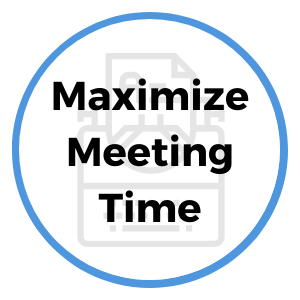- Home
- Business Planning Articles
- Information Management
Information Management for Decision Making Success
Businesses with strong information management practices have a strong advantage over competitors who are lacking in this area. More than ever before in history, data is king. Smart leaders were early adopters of information and data management. Eventually, everyone will need to jump on board if they expect to survive.
With technology advancing faster than ever before, the core competency of information management is key to an organization's future growth.
There is already a growing challenge for business leaders to effectively collect, secure, and analyze data that supports the growth of their business. Data is coming at us from multiple sources that needs to be processed, filtered, and disseminated to support a variety of critical outcomes.
Information can be sourced from within an organization, or externally from industry publications, professional associations, news, customer/clients, training, vendors, and consultants, just to name a few.
In a short period of time technology has gained an increasingly larger role in managing information we depend on for making quality decisions. As a result, IT (information technology) departments are becoming bigger and more advanced.
While data is more important than ever and will continue to grow in importance, leaders will still be in critical situations that will require them to "follow their gut". However, when decisions are routinely made without the support of real data, leaders are at a higher risk of making an error in judgement.
So yes, continue to trust your gut when appropriate, but if you have data available that can be helpful in your decision making, you should not ignore it.
“It is a capital mistake to theorize before one has data.”
- Sherlock Holmes
Warning! As you review data and apply it to your information management process, be sure to fully verify the data. One of the biggest problems with having so much data information available is that much of it is inaccurate. Data can easily be mistakenly (or purposefully) corrupted. Lack of data security can open your business up to financial and legal risk so you need to make certain your business is properly protected and insured for any potential breach.
The good news is that quality information management practices can be implemented to help minimize your risk.
In the following section you'll learn basic rules for using data to support important decisions for your business.
“Where there is data smoke, there is business fire.”
- Thomas Redman
Information Management Practices for Quality Decision Making
Consider following our information management process to ensure the quality of the data that is supportive for decision making. Answer these key questions as you determine the value of the information being presented to you and how you might leverage the information for more effective communication.
- What is the key message or call to action? How does the key message support the organization's priorities? If it does not support the organization's priorities, reconsider the actual value of the data. Perhaps you will decide to filter it out to help effectively lighten the load of information.
- What data is available to you that supports the key message? Take the time to identify, collect and understand any data presented to you. After vetting the data, you'll have more confidence in your final decision.
- When does the information need to be disseminated? Is it time-sensitive or confidential? Prioritization of information is important. Using data that is too old adds risk in the decision making process. There is a not so old saying about data, that "Data ages like a fish, not like wine."
- Present supportive data in simple terms. Once you've made your final decision, share the data you used to help make your decision. Don't get too far into the weeds as people can get lost in data very quickly. Share the process you followed and the high level findings. By sharing you are educating your team and earning credibility as a thoughtful and effective leader.
- Who is the appropriate audience? Determine if there are multiple audiences. If so, go through the same basic process for each audience. Pay special attention to coordinating the timing of communication between audiences. Following a top-down process of information sharing is most effective for effective buy-in.
- How will the information be communicated? Will the message be delivered electronically, printed/mail, phone, in-person? Thoughtfully plan to coordinate the scheduled timing of the communication.
- Execute your communication plan. Stick to your plan and hold everyone accountable for doing the same.
- Gauge response and follow up as needed. After communicating your message, keep your ear to the ground. Make yourself available for follow up discussions to ensure the team fully understand the message and what expectations you have of them.
Effective communication is imperative to an organization's success. Particularly when you make big decisions, you need to leverage proven information management practices for maximum effect.
The effective management of information within your organization, as well as externally to your client base, will provide a powerful source of knowledge that you need to achieve your most important business goals and objectives.





